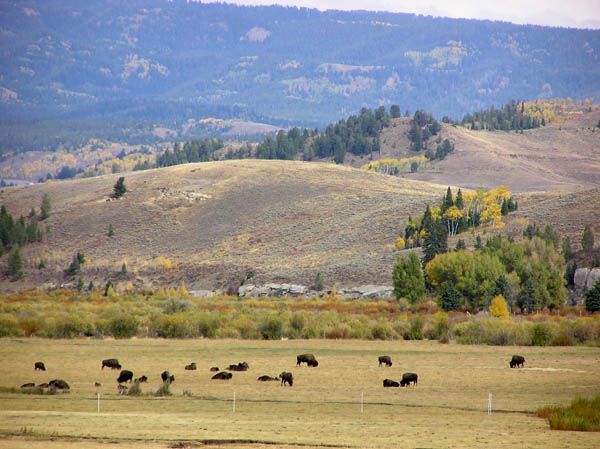In 1860, as part of the 8th Census of the United States, the Department of the Interior created amap to show the distribution of slaves in the part of the country where they were still held: The South. The northern states had emancipated their enslaved residents through law by 1804, and almost all of those born into the institution north of the Mason-Dixon line were out of it by 1848. (In New Jersey, the last bonded person of African descent didn’t walk free until the end of the Civil War.) Liberty for all would soon arrive and the map—the first and last of its kind, as it was the first and last slave census—would be rendered totally irrelevant and obsolete in just half a decade. The map’s detail is astounding. Every single county in half the country is shown in various shades of light and dark depending on the number of slaves. The darker the county, the more slaves it had. Each jurisdiction is named and the exact percentage of the enslaved population within it is given. At first, I thought that this relic from before the world I knew had nothing to do with me. Upon closer inspection, I realized that the distance between me and the map was far less than expected.
The map’s eerie statistical silence is captivating. When I first saw it in The New York Times’ Web feature on the 150th anniversary of the Civil War, it appeared to be just another yellowed piece of paper (or PDF) from the past. But the document’s quiet power grew as I enlarged it. I recognized the names and places on it. Within the detailed lines and shaded areas drawn on a draftsman’s table long ago, I recognized the homes and faces of my forebears. 
Fulton County, Ga., where I grew up, enslaved one out of every four people within its boundaries. In the counties in Georgia where my father and mother were born, Terrell and Dougherty counties, slaves were 47.2 percent and 73.4 percent of the populace. My great-great-grandmother, born in bondage, lost her hand in a cotton gin in her birthplace of Russell County, Ala., where 35.8 percent of residents were enslaved. She raised my grandfather, which means I’m one step removed from someone who was born a bondswoman. One of my ancestors in Neshoba County, Miss., somehow managed to escape his chains and run for the Choctaw tribe there, where he married into a local clan. My last name, Jones, reflects this fact. More than a quarter of Neshoba County’s population was enslaved in 1860.
I followed the map to all the places where I know I had kin—the tidewater of Virginia, McCormick County in the South Carolina upcountry and Beaufort in the low country. The same was true of Orleans Parish, Louisiana. I could not follow the map, however, to my ancestors in the modern day countries of Benin, Cameroon or Nigeria; nor to their New World clansmen scattered in Cuba, Haiti, Brazil, Colombia or Peru. The map counted only the productive capital of the United States. But it couldn’t account for slavery’s full cost to all those enumerated in the 1860 census: both enslaved and not. It is a cost we’re all still paying.
In 2011, it’s hard to reconcile the fact that our country was birthed as a slave republic with our nation’s radical foundational idea that all humans have equal intrinsic worth, value and rights. The incongruity of rhetoric and reality is a bitter pill for all of us to swallow. The first four generations of Americans grew up in this contradiction and fought a bloody war to resolve it. They did so because the institution of slavery showed now signs of slowing its growth by the time demographers drew this map in 1860. On the eve of the Civil War, southern senators were actively pushing the U.S. government to declare war on Cuba. They wanted war with Cuba for the same reason they wanted it with Nicaragua: the men, women, and children in bondage. Cuba, the largest island in the Caribbean, had the single largest concentration of slaves outside of Brazil and the U.S. Given the ban on the trans-Atlantic slave trade, there simply wasn’t enough slave supply here to meet the South’s growing demand.
The South’s slave-driven prosperity transformed into other forms of strength. By the mid-19th century, the majority of presidents and Supreme Court justices were southerners. Though a minority in the House of Representatives, southerners had equal power in the Senate; enough to block change. The single largest concentration of millionaires in the U.S. stretched along the Mississippi River in Mississippi and Louisiana, and cotton was the single largest earner of foreign exchange for the U.S. In 1860, the Mississippi Delta was the Silicon Valley of its era. The combined political and economic might of the South led northerners to label it “the Slave Power.”
What the map shows, then, is the distribution of might across pre-modern America. In terms of wealth, with respect to those who owned humans, the darkest areas are its richest and the lightest its poorest. But with respect to the enslaved and those who helped them, the opposite was true. The dreams of equality and freedom clung most fervently to the blackest places on the map. Those dreams and the acts of resistance that they instigated inspired those opposed to slavery, led eventually to war and—in Abraham Lincoln’s words—ushered in “a new birth of freedom.” The process of liberation for one group now ground its way through all the others. It was continued first by the formerly enslaved themselves, then the labor movement, then women, then by the grandchildren of the enslaved to secure their promised freedom, then by women again, and then by immigrant laborers, the elderly, disabled Americans, and lesbians, gays, and transgendered people. Though the Constitutional barriers to entry were removed, it was up to those left out of the founding document to make their way in. The initial acts of courage by those who faced inhumanity daily led to the expansion of human rights for us all.
What the map conceals is equally important.
It doesn’t show the Quakers, a marginalized fringe at the time, quietly building a national network to spirit enslaved men and women out of bondage. The Quakers were horrified by a system they could not escape but were determined to undermine. Quakers felt rightly that the entire American enterprise was tainted by slavery. Their efforts eventually flourished into the Underground Railroad.
It also doesn’t show acts of rebellion, both large and small, such as the 1811 Louisiana slave uprising—the largest in American history—or coordinated plantation-wide work stoppages. This resistance reminded masters that their subjects were indeed complex human beings, not mindless automatons.
It doesn’t show abolitionists raising money and insisting that anti-racist organizations be mixed race. It doesn’t show slaves pretending to be servile, all the while plotting elaborate schemes of escape—posing as a dead body and shipping oneself North, or pretending to be an upper-class, free slave holder for an 800-mile trip from Charleston to New York. It doesn’t show whites clashing with Federal Marshals in the streets of Boston to protect blacks from being removed and re-enslaved down South.
These points, all obscured in the map’s detailed demography, formed and linked cracks that eventually brought down the whole system. This chart of the Southern United States counts facts about the South’s enslaved except the one above all others the Founding Fathers must have known in their hearts: Liberty always finds a way.
Luckily, there was never again a need for a map like this in American history. And in this week of civil and human rights remembrance, we all must pledge to make sure that will always be the case. Although the institution of slavery is gone, the idea upon which it was created, that some are more human than others, is still believed by too many, in the U.S. and around the world. The fact that our nation was born in paradox is something that we should be mindful of in the ongoing debate on immigration and in the coming debate on the role of Muslims in America—debates promised by the new Republicans controlling the House. This paradox is something that those lawmakers live with everyday; the Capitol building itself was built by those not free.
An inscription atop the map proclaims that it will be sold for the benefit of sick and wounded soldiers. Within 12 months, the Civil War had begun and there were more casualties than the map could foresee; the federal government had to create an entirely new division in the executive branch to deal with them all, now the Department of Veterans Affairs.
Martin Luther King, Jr., once said, “All we’ve ever said to America is ‘be true to what you said on paper.’” Fortunately he meant the Declaration of Independence and not this map. For the map is a mixed testament, and it demands solemnity rather than either scorn or triumphalism. It shows that things can go horribly wrong and then come right. That human beings can be at their worst and then provoke the best. That time can heal and then reopen wounds. But most fundamentally, it shows our resilience—and resilience is the necessary ingredient to freedom. As the Roman philosopher Seneca—himself a citizen in a slave Republic—stated 2,000 years ago, “He who is brave is free.”
Imara Jones is a New York-based blogger. His site, Caffeineator.com, offers incisive comments on the disruptive world in which live and the shape of things to come. A version of this essay originally appeared there. 






